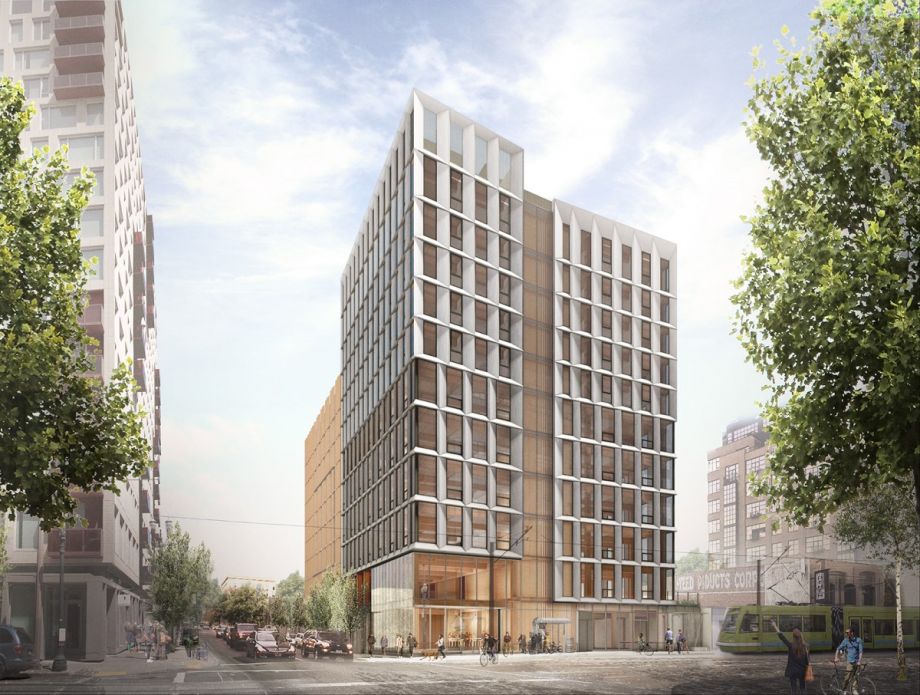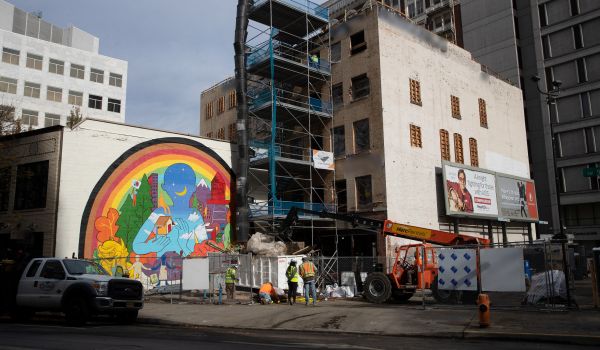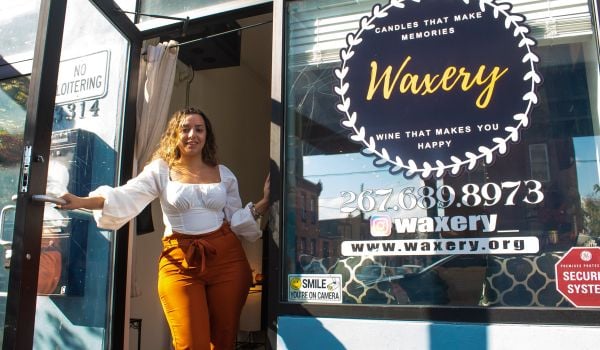In 2015, Minneapolis unveiled plans for a 7-story office building in the North Loop section of the city. There was little remarkable about the announcement — except the primary building material: timber.
Now, officials in Portland have kicked things up a notch, so to speak, by approving an all-wood, 12-story building in the city’s Pearl District. According to the Associated Press, the building, called Framework, will be the first wood-framed high-rise in the U.S., with workers breaking ground this fall.
According to Popular Science, wood-framing gave way to steel and concrete around the end of the 19th century, as cities began to densify. After a succession of fires swept through cities like Baltimore, Chicago and San Francisco, wood framing on taller buildings became almost taboo:
These disasters led to strict local construction codes that limited the height of residential wood buildings to as low as five floors. The rest is architectural history. The great forests of skyscrapers that grew across the world’s cities in the 20th century were made almost entirely of steel and concrete.
Toronto has been bringing taller wood-framed buildings back. In 2015, a code change in the Canadian city allowed developers to construct wood-framed buildings up to 6 stories (the previous height limit was 4). Obviously that’s not as ambitious as the 12 stories planned for Portland, but the two cities have similar reasons for going back to the once-feared framing method. For one thing, it’s cheaper.
Portland’s building will use a product called cross-laminated timber, or CLT.
According to the AP:
To make CLT, lumber manufacturers align 2-by-4 boards in perpendicular layers and then glue them together like a giant sandwich before sliding the resulting panels into a massive press for drying. The resulting panels are stronger than traditional wood because of the cross-hatched layers; CLT can withstand horizontal and vertical pressures similar to those from a significant earthquake with minimal damage.
They are also lighter and easier to work with than regular timber, resulting in lower cost and less waste.

(Lever Architecture)
Another (important) factor making officials increasingly comfortable with wood framing: regulations that ensure its fire safety.
“The building permit for Framework was approved following completion of a stringent Performance-Based Review process that included a series of fire, acoustic and structural tests and oversight by an expert peer review team,” according to an announcement about the project from Framework Project, LLC. “The tests, which were carried out over several months in 2016, have proven that buildings constructed with mass timber including Cross-laminated Timber (CLT) and Glu-laminated timber (Glulam) can perform to fire and life safety requirements and in some cases, exceed current standards.”
Fire officials also worked closely with Toronto and Ontario planners to make sure that code change guaranteed fire safety.
According to the AP, Oregon state officials see the building as a first step toward reviving a dying timber industry.
“Logging, once a major source of revenue in Oregon, has dropped sharply in the past few decades because of greater environmental protections for salmon and the spotted owl,” the news outlet reports. “The loss of the industry has devastated some of the state’s rural communities.”

Rachel Dovey is an award-winning freelance writer and former USC Annenberg fellow living at the northern tip of California’s Bay Area. She writes about infrastructure, water and climate change and has been published by Bust, Wired, Paste, SF Weekly, the East Bay Express and the North Bay Bohemian
Follow Rachel .(JavaScript must be enabled to view this email address)
















